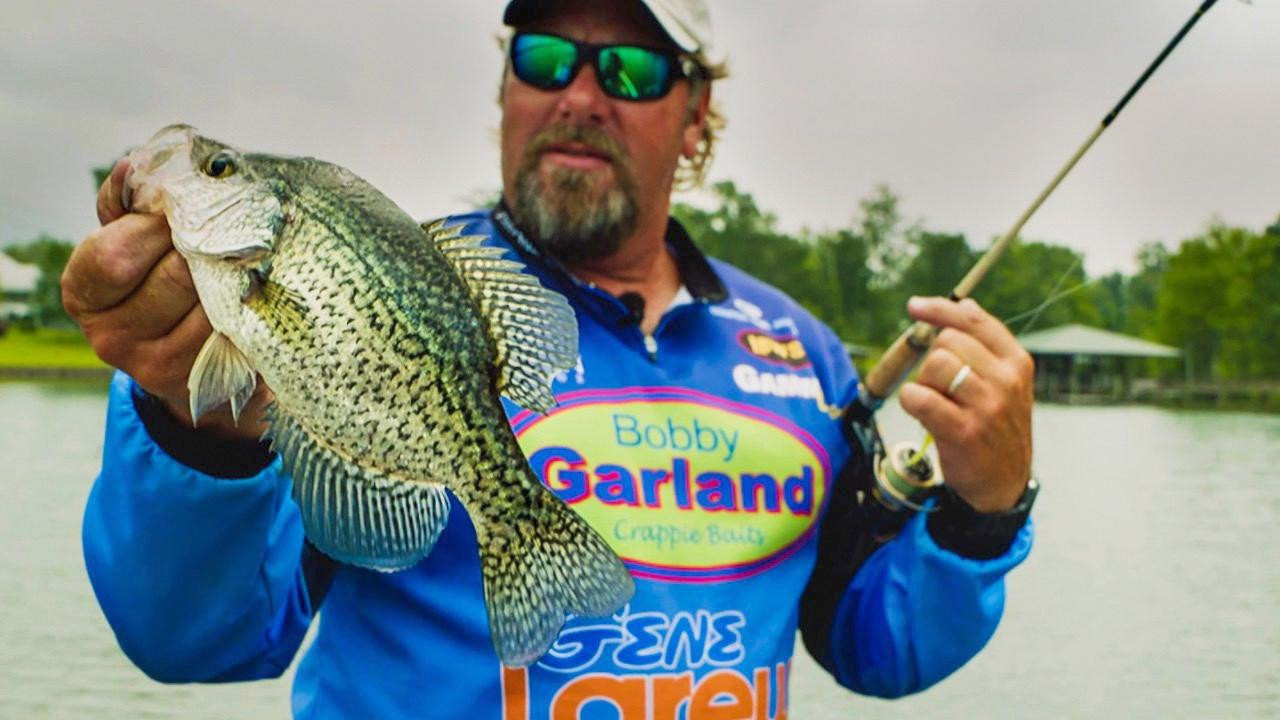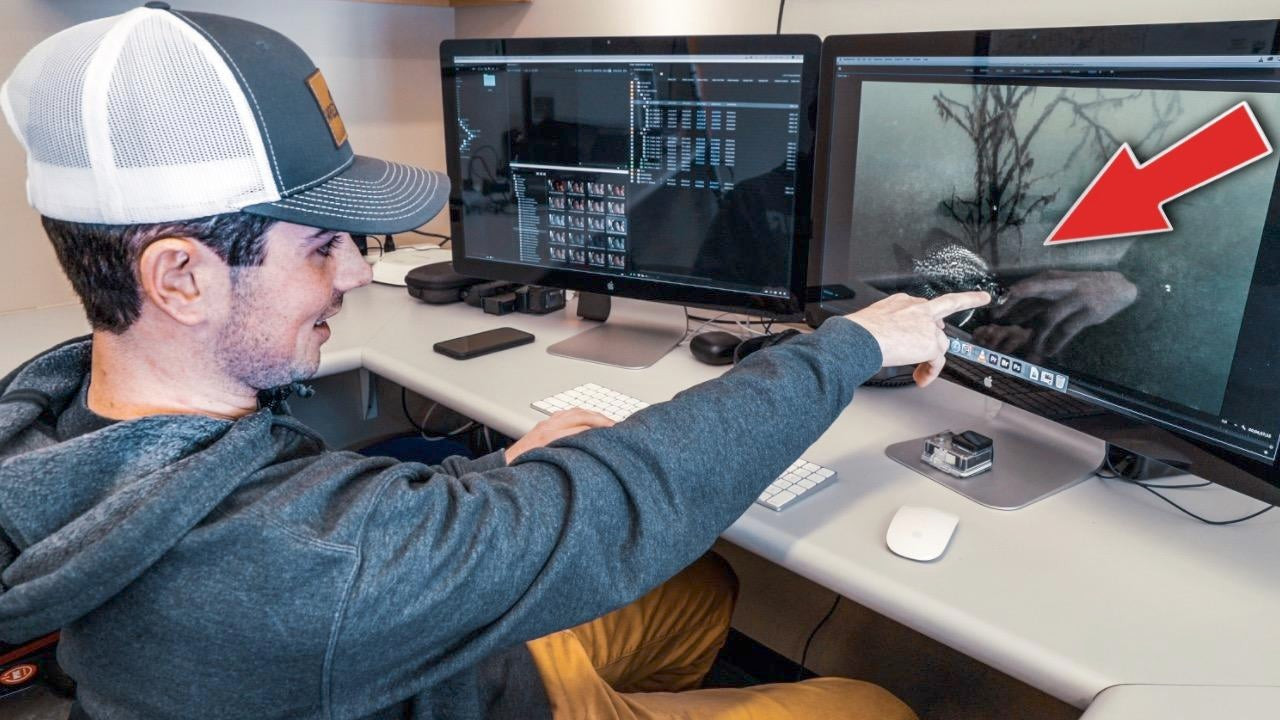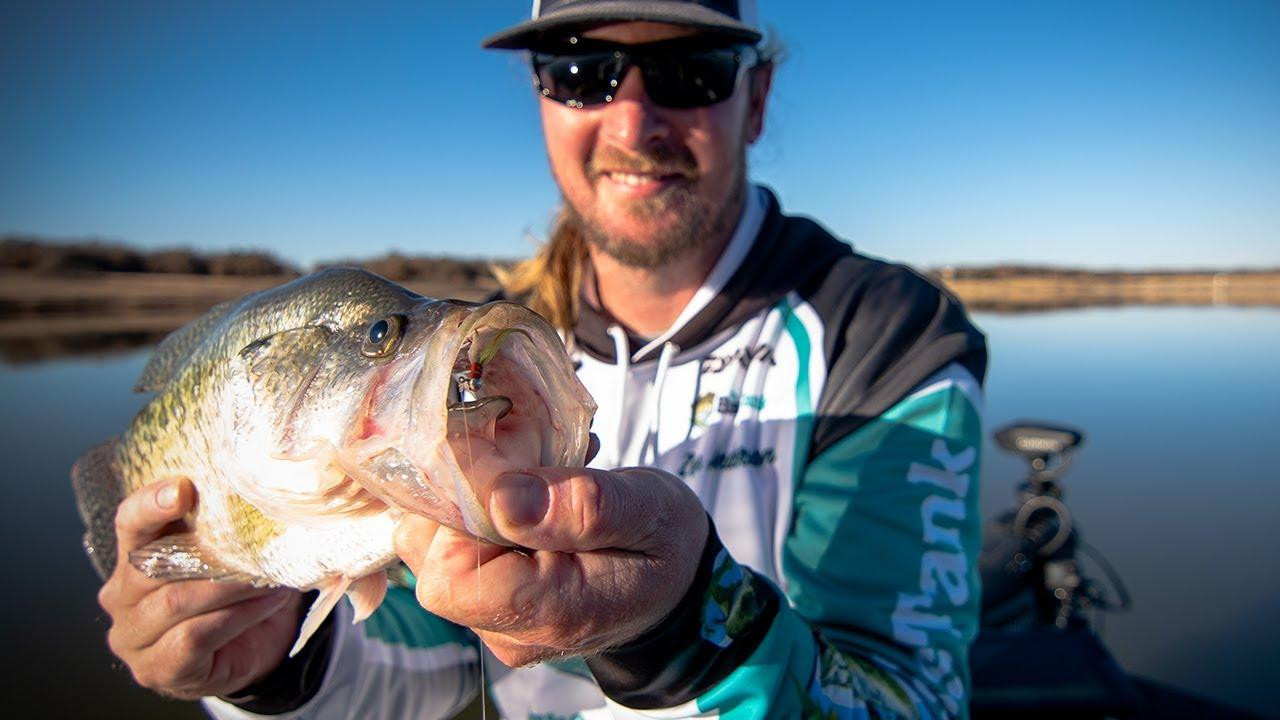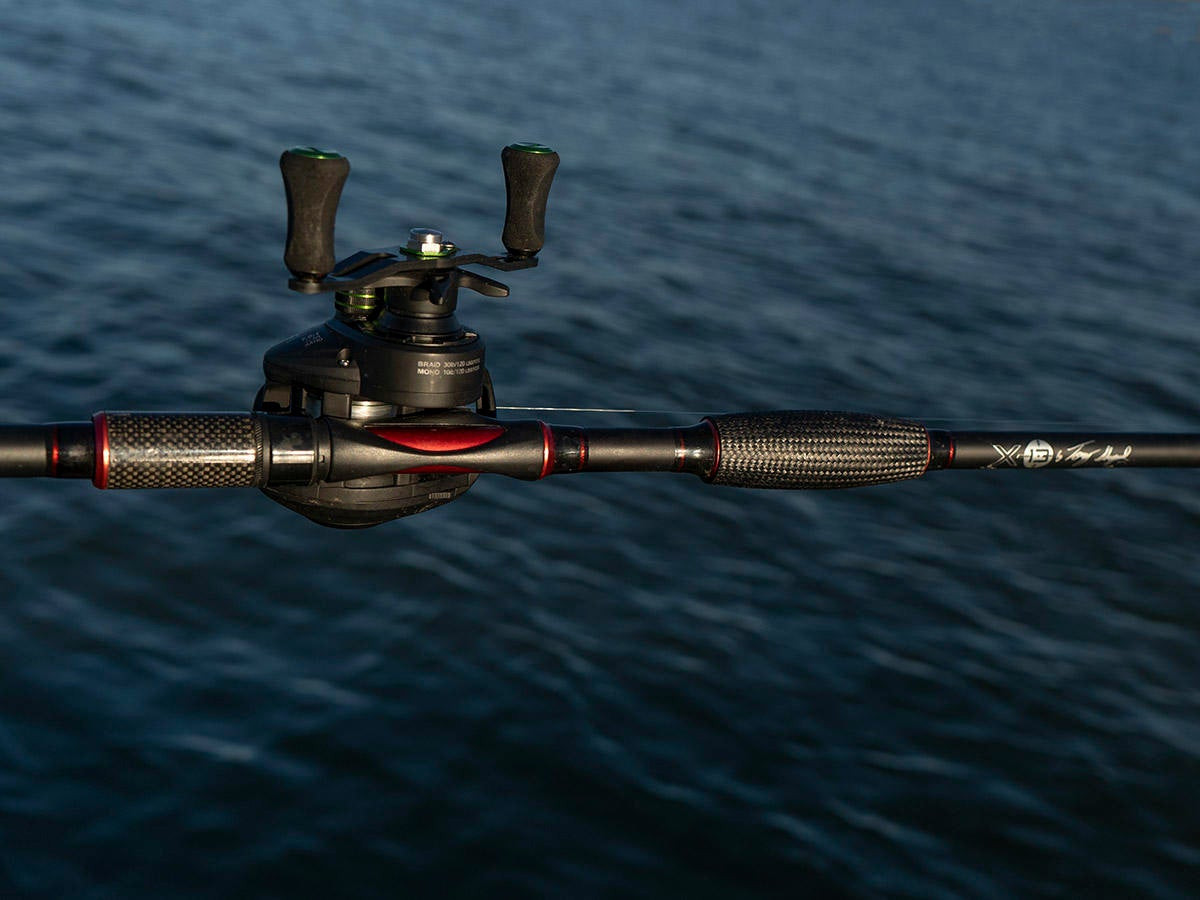Alabama crappie guide Lee Pitts explains why he prefers using crappie jigs and plastics over bobber fishing for crappies day in, day out. Simply casting or even vertical fishing a jig offers maximum flexibility in terms of depth control, how you work the bait, plus the ability to pattern the fish.
Here are Pitts’ 4 reasons why he prefers tight-lining crappie jigs and his preferred rod setup for the job.
- Cover more water than you can with a float. Jig fishing is all about casting and working a bait at any depth, but for crappies, most often with a slow and steady horizontal retrieve. This allows you to eliminate unproductive water quickly in search of active fish.
- Cover more of the water column than with a bobber. Not getting bit at a certain depth? Fish the jig shallower or let it sink deeper until you determine the depth fish are holding, then simply “count down” the jig to the desired depth. Unlike a bobber, there’s no timely re-rigging necessary when tight-lining a jig.
- Jigs can be fished horizontally or vertically. Unlike a float, which essentially suspends a bait vertically in front of crappie, jigs excel for slowly swimming a lure through the water column. Still, they can also be fished vertically beneath the boat, giving you the best of both worlds.
- Ability to contact cover. No different than hitting cover with a jig or crankbait for bass, contacting cover is also a trigger for crappies. A jig allows you to bump brush or a dock to trigger reaction strikes from tentative fish unwilling to react to stationary or suspended baits.
GEAR LISTING
- ROD – Lew’s Wally Marshall Pro Series Spinning Rod, 6’6” Med Lt:
- REEL – Lew’s Wally Marshall Signature Series Spinning Reel Series 100
- LINE – Gamma High-Performance Copolymer Line, 6lb
- JIG – Bobby Garland Mo Glo Jig Minnow Jighead, 1/16-ounce
- PLASTIC – Bobby Garland Baby Shad
- FISH FINDER – Humminbird HELIX 9 CHIRP MEGA SI+ GPS G4N
















